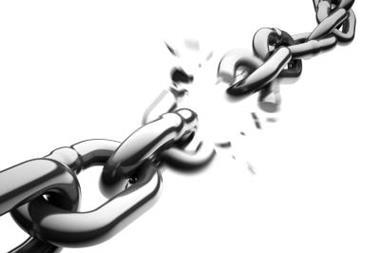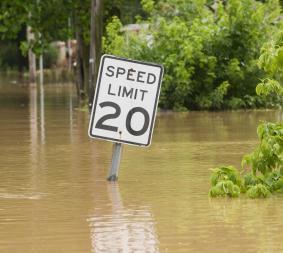In a competitive environment, preventing loss is vital. Nathan Skinner garners the thoughts of five risk managers on the subject
Global business is a cut-throat world. In a harshly competitive landscape companies that want to survive cannot risk having their operations interrupted. Those that do are in danger of falling by the wayside while their competitors step into the breach and reap the rewards.
For the companies that took part in this month's debate, risk engineering provides a valuable way of staying in business and avoiding big losses. It could mean upgrading a facility's protection against fire, or driving a culture of risk awareness into the organisation. After all, having insurance in place will not compensate for the long term damage to reputation caused by an inability to serve clients.
Risk engineering is not all about protecting a building or key piece of machinery. A central part of the process is surveying the organisation and achieving a 360° view of risk, be it one-off events, liabilities stemming from defective products or accidents at work. Getting greater transparency on the main vulnerabilities helps the organisation become more risk aware – one of the first steps towards managing risk.
With an awareness of what the threats are, risk managers are in a much stronger position to prove to senior management and the board the value in taking preventative steps. It also puts them in a stronger position to negotiate with their insurers.
But change is never going to be easy. Most of those quoted here found proving their programmes’ value to individual managers a huge challenge – although helping them understand their exposures was a major boon.
Globalisation has also thrown up obstacles. Consolidated critical functions and tighter supply chains have raised the stakes. A single facility going down could have implications way beyond its four walls.
The trend towards opening facilities in riskier parts of the world where the rules of engagement are different also raises problems. It is hard for central departments to keep a close eye on business operations situated on the other side of the world. In the main, the companies sampled here had not moved their risk engineering into auditing third parties. But this was seen as a distinct advantage and something for the future.
Heinz Risi
director of corporate insurance and risk management, Schindler
In Schindler, a lifts company, risk engineering is a business priority. Heinz Risi, director corporate insurance and risk management, explains: ‘We have always had a preventative approach to risk because we retain a lot of it ourselves by high local deductibles and in a captive.’ Schindler started with risk management in 1984. ‘Now I have three risk engineers in my department doing periodical risk analysis on our key production sites worldwide.’
There are two elements to the company’s approach. On the one hand, risk engineering deals with supply chain and business continuity. The other side is production risks, product liability and, consequently, reputation risk. ‘Safety is a major value in our group,’ says Risi, ‘we only want to put safe products onto the market.’
“In China, a massive growth area, plants are more exposed to natural hazards.
Francis Van Den Neste
On the supply chain side, Risi organises risk analyses of manufacturing locations worldwide. Due to the size of the company, this is done by geographical region. ‘One year we audit all the facilities in Asia-Pacific; the following year we do Europe; the Americas come after that,’ he says.
The internal risk engineers are accompanied by an external consultant, who gives a neutral opinion. ‘With the help of our insurer we have established a benchmarking tool to see how our companies are dealing with their risk,’ adds Risi. It’s a policy that appears to have paid off: the last major fire that the company experienced was in 1991, around seven years after it hired its first risk engineer.
Outsourcing introduces hidden challenges for Schindler. Once production was largely focused in-house, but nowadays many components are outsourced to suppliers. These dependencies are a high risk. Four years ago, Schindler’s risk engineers began auditing the main suppliers. ‘We go to their sites and analyse them as we do with our own plants,’ says Risi. In their supply agreements, partners agree to give Schindler’s risk engineers access to their production facilities.
Product risk engineering is carried out by someone else in Risi’s department. A risk analysis is performed at an early stage in a product’s development. The risk engineer makes a number of recommendations based on the analysis. Product development can only continue when the engineer is satisfied the risks have been handled. Risi says Schindler has always done risk analysis this way because it wants to be a preferred supplier and minimise litigation risk.
For Risi, risk engineering is about understanding the company and its exposures. ‘Insurance is the last step of risk mitigation,’ he says.
Property manager
large motor manufacturer
This participant, who wished to remain anonymous, manages surveys of the company’s production facilities worldwide and acts as a liaison between insurers and the prevention department. ‘I follow up with the departments in charge of prevention, track the spread of the recommendations and sometimes the evolution of our standards according to engineering recommendations,’ she says.
The company has an annual audit programme of around 60 plants worldwide for fire and explosion prevention. More than 50% of these facilities are HPR (highly protected risks). ‘Our strategy is to maintain this level of excellence in terms of prevention and protection,’ she says.
Other sites require investment to achieve the higher level of excellence. And for some, she is satisfied by the level of protection. ‘We don’t need to be excellent everywhere. Either the risk is acceptable or production can be shifted easily elsewhere in the event of a loss.’
It is a process which has paid dividends: in the last 10 years the organisation has not experienced any major claims. ‘That’s given us great power of negotiation with our insurers,’ she explains.
“The focus has to be on protecting the business, not just the plant.
Willem Leyds
The manufacturer also launched a programme for machinery breakdown. She identified and prioritised the plants and equipment that needed to be surveyed. In the second phase she produced guidelines based on the survey. In the last quarter of 2008 she hopes to audit four plants specifically for the risk of machinery breakdown.
‘I assume we will have to audit some plants on an annual basis, while others we can audit less frequently depending on the situation and criticality of the industrial system,’ she says. In the machinery breakdown audit, an engine plant would require more regular audits because of the centrality of its business operations. This is contrary to the risk of fire and explosion, which is audited on an annual basis.
She does not have any difficulties transferring the machinery breakdown risk – insurers are ‘familiar’ with this risk – although she hopes to adjust the levels of premium. But for natural hazards she thinks there is insufficient capacity in the market.
‘Business continuity management will be our next challenge,’ she says. It is the nature of the automotive industry for one plant to supply many others. If a plant goes down upstream it calls a halt to the production of a lot of different vehicles. The same problem is true of suppliers, which as it stands aren’t audited by her. ‘We have no idea about the quality of prevention within our supplier plants,’ she says.
Marc Schaedeli
head of risk management, Nestlé
A large fire at a Brazilian facility in 2001 drew Nestlé’s attention to its loss prevention strategy. Although the fire did not have a major business impact, according to Marc Schaedeli, head of corporate risk management, it convinced the company that it needed more transparency in order to understand the impact similar events could have in the future. ‘We were lucky in Brazil,’ he says.
Today, the situation has changed. The company is running its factories at much higher capacity utilisation and with tighter supply chains. A similar event today would almost certainly have more of an impact.
With the goal of driving risk awareness into the business, Nestlé began implementing a global loss prevention programme. The analysis revealed that frequent small fires were the company’s biggest vulnerability. Through business interruption costs and breakdown in supply, fire accounted for nearly two thirds of the company’s insured property losses. ‘We could be compensated financially by our insurers after the event,’ says Schaedeli, ‘but that doesn’t compensate for the loss of trust, reputation and image.’
He adds: ‘Having a loss prevention programme helps us to define some of the triggers of business interruption, which helps management see the business case.’
The first positive signs of improvement have begun to emerge within the past six years. The total amount of insured property losses declined and Nestlé’s captive was able to take on more risk. ‘The programme has helped us triple the amount of retention and I strongly believe it will go further,’ says Schaedeli.
“Fire accounted for nearly two-thirds of the insured property losses.
Marc Schaedeli
Very few of Nestlé’s managers have first hand experience of a major loss event, Schaedeli says the programme has helped them to better understand their exposures and take measures to mitigate some of them. He explains another major benefit: ‘We have established a much better prevention culture in our organisation.’ Part of the initiative was designed to build a culture of risk management from the bottom up. A key concern at that stage was to sell the benefits to the employees and other stakeholders.
‘Convincing the board of the benefits was not a problem, once more transparency was available,’ says Schaedeli. Faced with a major loss event, management quickly becomes very concerned, he adds.
In the future, he plans to to assess additional areas where the company could benefit, including auditing other partners in the supply chain to ensure they have adequate prevention plans. ‘We will expand the strategy beyond businesses directly owned by the company,’ he says.
Willem Leyds
risk engineer, AkzoNobel
Willem Leyds controls risk engineering for AkzoNobel, a large chemicals and coatings company. Reporting directly to the director of insurance, he focuses on safety and environmental risks. ‘My aim is to get a perfect fit between the policy and the risks,’ he explains.
With certain risks, where the premiums are high and the probability very low, he explains that insurance is not the right solution. ‘If we had an explosion or a big leakage in a chlorine plant that affected a whole town, money wouldn’t really help us.’
Instead, Leyds focuses his energies on finding the company’s key vulnerabilities: ‘My main focus is on the supply chain.’ He finds that is where risk engineering can deliver real added value. Business interruption scenarios are used as input for buying insurance limits. Discussing scenarios within the company creates risk awareness and can limit vulnerability.
One of AkzoNobel’s key exposures, which Leyds identified, is a major chemicals plant in Sweden. The facility started out as a pilot project and expanded over the years, leading to a ‘less than optimal’ design. Many other facilities rely on the ingredient manufactured at the site. A site risk assessment established that the probability of a complete loss was unacceptable.
Steps were taken. Risk engineers proceeded to upgrade the plant’s protection, and the company negotiated more comprehensive coverage with its insurers.
Choosing to spread the risk, AkzoNobel decided to build a new plant producing similar products in China. Risk engineers advised the future plant management team on how best to protect the plant. ‘Sound project management ensures our recommendations are followed up in the right way,’ says Leyds.
“Insurance is the last step of risk mitigation.
Heinz Risi
‘The focus has to be on protecting the business not just the plant,’ he says. ‘That involves more than just putting in sprinklers or having fire extinguishers. It starts with an analysis of the business; the next step is to see the plant in its business context, and then you have to come to a required level of protection.
Risk engineers have to speak the same language as the rest of the business, emphasises Leyds. ‘The decision about a certain level of protection can never be based on the inherent hazard of the plant alone, but has to take into account the vulnerability of the global supply chain. The challenge is to find the optimal level of protection.’
‘If you look upon the plant from a business perspective, you will obtain commitment from the business people, because they will realise the vulnerability of the supply chain themselves,’ he says.
Francis Van Den Neste
corporate risk manager, Roquette
Chemicals can be a risky business. That is why French firm Roquette is so interested in risk engineering and loss prevention. By protecting its properties, the company says it can limit loss events that could cause disruption to supply and damage to its reputation. Using the same techniques the company seeks to limit its liability exposures and ensure the safety of its workforce.
Roquette supplies major food and pharmaceutical clients around the world with products derived from starch. Continuing to be a reliable link in their clients’ supply chains is a key priority. ‘We can’t afford to be in a position where we are unable to deliver to our clients,’ explains Francis Van Den Neste, corporate risk manager for the company.
Taking a proactive approach to risk is the only way, he argues. ‘If we protect our property we will remain in a position to deliver to our clients. The other benefit is that well protected assets tend to have less frequent and severe losses.
In 2002 the company put in place a captive and since then has achieved some landmark success. Two thirds of the company’s factories world wide are rated as HPR. The final target is to achieve HPR across all facilities.
The problem is that Roquette keeps growing. In China, a massive growth area, plants are more exposed to natural hazards. ‘Obviously we have to take these risks into account,’ he says, referring to a recent project to protect a facility from flood.
Another challenge for the company is loss prevention for liability issues. ‘I’d say that’s our biggest challenge at the moment,’ he says. The risky nature of the industry impels Roquette to ensure the safety of its employees. Since 2007 it has been working to develop its strategy in this area. By improving safety, Van Den Neste has an eye on reducing the company’s medical bills.



















No comments yet